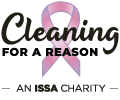Articles
Restrooms: Where Are the Germs Really?
Categories: Cleaning Best Practices, Cleaning for Health & Safety
By Robert Kravitz | January 18, 2018 << Back to Articles
According to a study by NSF International, a not-for-profit standards-development, testing, and certification organization, more than 90 percent of restroom users perform some type of “restroom gymnastics” when using a public restroom: using paper towels to touch handles and faucets; shoe bottoms to flush toilets; and elbows to open and close doors, turn on electric hand dryers, or operate manual dispensers.
The study also found that some users crouch precariously above the toilet seat without ever touching it. And in ladies’ restrooms, feminine-hygiene products are often flushed down toilets because women do not care to touch the lids of typical feminine-hygiene dispensers. This can cause serious plumbing problems for a facility, as pipes can be clogged by sanitary napkins.
The study concluded that most restroom users have developed a “Howard Hughes–type” paranoia and will do just about anything to avoid touching restroom surfaces. Unfortunately, some of this paranoia is based on fact. Using a variety of measurement techniques, such as ATP rapid-monitoring systems, we know that many health-threatening germs are present in public restrooms to varying degrees, including Streptococcus, Staphylococcus, E. coli, Shigella bacteria, the Hepatitis A virus, and the common-cold virus.
Here, There, But Not Everywhere
According to a study by Elliott Affiliates, a Baltimore, MD-based consulting firm that works with the facility-management industry, there is not a high degree of connection between how clean a restroom looked and the level of contamination found.
So where are the germs? We might, according to several studies, be surprised where germs are—and are not. For instance:
- Toilet seats. Although most public-restroom users consider the toilet seat germ center No. 1, it is, in fact, not a common vehicle for transmitting disease. And even if a toilet seat does become contaminated, a user would have to have a cut or open sore on the buttocks for cross-contamination to occur. Even outdoor portable restrooms, according to a study by University of Arizona microbiologist Dr. Charles Gerba, were found to be cleaner than picnic tables, playground equipment, shopping-cart handles, and escalator handles.
- Sinks and faucets. Germs do colonize on faucet handles, and a restroom sink may actually be the most germ-ridden surface in a public restroom. One reason for this is that the dampness of the surface helps keep microorganisms alive. Sensor-controlled faucets or the use of paper towels to touch the faucet help alleviate this problem. Rarely, it seems, do users actually touch a restroom sink.
- Toilet mists. Although the toilet seat may be relatively safe, this is not true of toilet mists. Each time a toilet is flushed, microscopic mists are released from the bowl. These mists contain a host of germs and bacteria and—depending on the type of toilet, water pressure, and age of the fixture—can cover as much as five feet around the toilet.
- Feminine-hygiene disposal units. Apparently, there are real reasons many women prefer not to touch these dispensers. A study by the American Society of Microbiology stated that “the outside of a sanitary napkin receptacle is one of the most contaminated ‘hot spots’ in the ladies room.” Typical feminine-hygiene dispensers become contaminated as they are used and are often contaminated once again as a result of the toilet mists mentioned above.
Solutions
Now that we know where the germ-related problems are in public restrooms, we can emphasize more cleaning in those areas where it’s most needed—and determine the best method for cleaning thes areas,
For instance, the Rockford School District in Saint Louis, MO, derived surprising economic and health benefits by transferring from conventional to “touchless” cleaning systems, also known as high-flow fluid extraction. “According to the head of custodial services, the actual time required to clean a restroom fixture declined from four minutes to just one minute with the No-Touch system,” says Kaivac’s Morrison. “This is a significant solution when it comes to finding ways to improve worker productivity.”
Additionally, Morrison says that the district reported considerably fewer cases of the flu than other nearby school districts. While some districts indicated that as many as 15 percent of their student bodies had the flu in past years, the Rockford district found only 5 percent of its students contracted the illness.
As for feminine-hygiene disposal units, some facility managers are beginning to outsource the cleaning and maintenance of these receptacles. According to Karen Martinez, president of Cannon Hygiene Mid-Atlantic, her company’s restroom-hygiene service installs and maintains touchless disposal units for commercial customers, such as airports, restaurants, health care, and other large public facilities. The units are sensor controlled so that the lids never need to be touched. Also, her company removes and replaces the units with fresh machines on a set schedule.
“This is safer for both the user and the cleaning professional,” says Martinez. “Maintaining these units is not something to take lightly, especially in hospitals and schools, where concerns about germs and protecting health are paramount.”
Mother Knew Best
Even with the most effective cleaning systems and products, there’s only so much cleaning professionals can do to help provide solutions to their clients’ restroom-cleaning needs. There is still much that depends on the restroom user. “As paranoid as they appear to be about germs in public restrooms, studies still report many people do not wash their hands after using the restroom,” says Martinez. “We can do our part to help our customers, but restroom users must not forget the responsibility they have, which is simply to wash their hands.”

About the Author.
A former building service contractor, Robert Kravitz is president of AlturaSolutions Communications, a Chicago, IL-based firm that provides corporate communication services to organizations in the jansan and building maintenance industries. He can be reached at [email protected].





